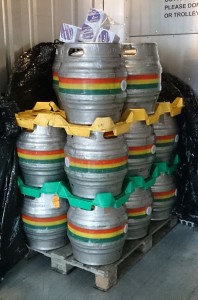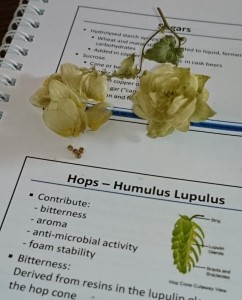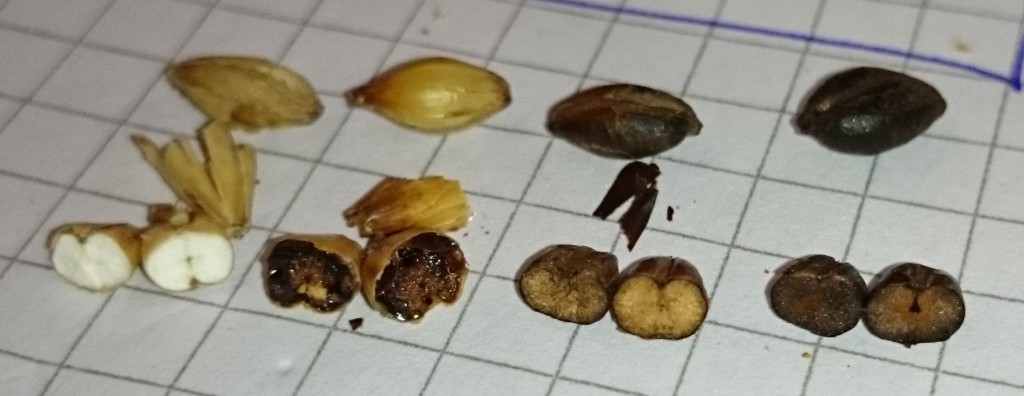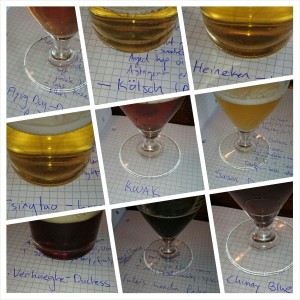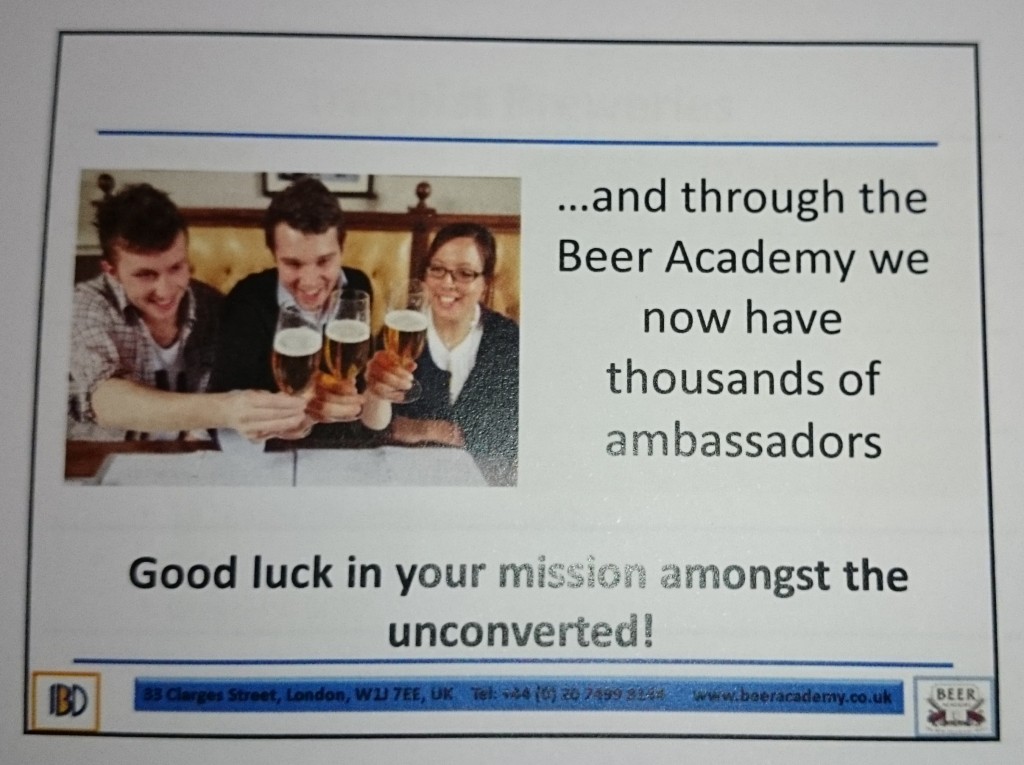Well, there has certainly been some interesting discussion out of the “Three Cask Ale Fallacies” post. On the back of some of this discussion some updates have been made to that post (all clearly labelled as such). It is time to post a follow-up I think, rather than muddy the waters by adding more updates to my own post.
Background
- Ed Razzall’s Original Post: A hastily written piece on cellarmanship
- My Challenge: Three Cask Ale Fallacies
- Boak & Bailey’s post: Tradition and Science in the Pub Cellar
There is some discussion worth reading on the Boak & Bailey post.
Clarification
I just want to take a moment to state clearly what I am NOT claiming, and never claimed:
- Most importantly: I am NOT claiming that Ed is serving duff beer. I think his process is sound but I challenged some of the methods and justifications. I thought I was very clear in my post that a) I expect Ed serves fantastic beer, and b) I think Ed is the sort of cellar person we need in more pubs.
- I am NOT claiming that there is a one-true-way to keep cask ale. This would just be totally bonkers. I just seek to examine the reasons behind certain thinking and practices.
- I am NOT claiming that I am an expert on the subject. However, I do consider myself an informed commentator… who is seeking to extend and clarify his own knowledge on the subject.
- I am NOT claiming that the general public ought to be aware of any of the technicalities. This is a discussion for people who keep beer or are deeply interested in it. Albeit if I hear “the general public” peddling bullcrap as fact I will sometimes challenge them on it. This most often involves “I’m a CAMRA member” types who’re are proselytizing or trying to “educate”. It happens on the oxygen front predominantly. I suspect I find myself on the receiving end of such education more often than older folk purely because I spend too much time around beer and I’m under the age of 50 (I’m 34, for what that’s worth) and I’m a foreigner (Australian). So it is assumed that I need a proper education in “English beer”. This is usually hilarious… but anyway, I digress.
The conversations coming out of my original post ranged far and wide with all kinds of wild tangents of discussion and heated argument taking place. Even “CAMRA bashing” became the topic at one point. I’m sticking purely to my original points in this post.
1. Oxygen (O2) – needed in secondary/conditioning?
This point hasn’t really been discussed much. I stand by my statement that any requirement for O2 to help/start “secondary” & “conditioning” is a myth.
@ale_is_good @edrazzall @ColinStronge @jamesbwxm Don't add oxygen at any point after oxygenation of chilled wort #diplomaticanswer
— Dominic Driscoll (@ThornbridgeDom) May 12, 2014
I don’t know where the diacetyl item comes from… the material linked to in the comments appears to me to claim the opposite. (Find the “OXIDATION” section, it does explain that plenty of oxygen is needed in the wort to ensure a healthy fermentation with little diacetyl production.)
I take it by the lack of discussion on the topic that there isn’t any real technical challenge or counterexample.
With respect to Ed’s cellaring process I don’t think O2 plays any role in the quality of the beer coming out at the tap. When a cask is vented it’ll be ejecting CO2 which will mostly keep air/O2 away from the beer. If the cask is sealed with a nylon peg when it is not active then this ensures O2 continues to stay out of the picture. It won’t be until the beer is served that air/O2 is drawn into the cask as per usual with cask ale. (Where we hit a whole different kettle of fish with respect to the desirability of oxidation to “soften” beer.)
3. “Secondary” (cask conditioning) – does not occur at the brewery?
There has been a little discussion on this topic but not a lot. I’m standing by my position that _most_ cask beer leaves the brewery with suitable “condition” (sufficient vols CO2) to serve. (Meaning only that there is sufficient CO2, not that the beer is ready to serve… this will depend the beer and maturation required to achieve peak/desired flavour.)
There has been some lighthearted challenge on the use of the term “secondary”. A bit nitpicky perhaps… we all know that it is just a continuation of fermentation, right? And it is common practice to use the term to refer to that phase of fermentation used to achieve sufficient CO2 is in the beer. This “secondary” fermentation might take place in bottle, cask, or tank – and it doesn’t magically cease when the beer leaves the brewery. (Ignoring sterile filtered and/or pasteurised beer of course.)
@ale_is_good Yes, and no.
Pt.1
Nowadays brewers send beer out carbonated, either priming or casking high. To brewers "secondary" is finished
— Geoff Latham (@LeaffGotham) May 14, 2014
@ale_is_good Pt.2
When venting, rapid release of pressure can cause CO2 to drop below equilibrium. Cellarman sees "secondary" bring back CO2
— Geoff Latham (@LeaffGotham) May 14, 2014
As for the original point – I fully accept that sometimes beer does leave the brewery without sufficient carbonation. I said as much in my post. There is a variety of reasons for this – the yeast might just be a bit lethargic, possibly due to cold weather, or the brewery might not have given it enough time… and in this latter case I believe it is normal for a brewery to give a warning. It is also not unusual for a pub to reject a beer that does not arrive with a reasonable CO2 level. This has been my personal experience on this subject.
I have asked a few brewers about this in the last week and the uniform answer has been that they don’t let the beer out of the brewery until sufficient time has been given for the beer to reach a desirable carbonation level. (It is an amusing co-incidence that one brewer who I don’t believe was aware of this discussion warned me: you can have this beer but we’ve only just racked it so it will need a week.) The most useful bit of information on the topic I’ve found is a blog post from Jon of Stringers Brewery: Gas, and Hot Air – this discusses tank versus cask conditioning at the brewery, the relevant part of his post is the bit where cask leaves the brewery at 1.4 vols CO2 to be ready for venting at the pub at 1.5 vols CO2 (and will be finally be served below this after being vented).
Why is Ed’s experience of this at odds to the reality? It may be due to venting immediately after shaking the cask… this will cause a violent exit of CO2 from solution. So if you immediately sample the beer from this cask it probably is seemingly flat. However as Ed explains he then gives his beer plenty of time to generate some more CO2 to recover its condition.
My experience of cask ale is that is usually arrives from the brewery well carbonated. It is left on stillage for at least half a day and then vented carefully to try and retain CO2 in solution. Retaining CO2 is ideal for beer festivals, the context in which my own experience lies. I don’t have the experience of a pro cellarman, but I have vented at least 1000 casks in this way across a very wide variety of breweries and beers.
I cannot say whether one or the other method results in better beer. One could ponder that Ed’s violent “whoosh” of CO2 release carries away undesirables – sulphur compounds perhaps that give “green” beer its “Burton Snatch”/struck-match aroma? On the flip-side this could perhaps cause the beer to give up volatile hop aromas that brewers try so hard to keep inside the beer. One for some experimentation perhaps.
Oh no! Look at the gas I'm losing! If only there was some sort of dual strain yeast that make more for me.. pic.twitter.com/ByQvwbXJt4
— Ed Razzall (@edrazzall) May 18, 2014
2. Yeast rousing (shaking/rocking casks) – is essential for good beer?
This item has been rearranged to be last as it is the “myth” I’m least convinced about. When doing my training I was instructed by a good brewer to *not* agitate casks unnecessarily. I took it as being a strict rule, coming from an experienced chap with a Heriot Watt masters degree. However I’m now thinking this was a “lies for children” sort of instruction… a rule of thumb that hides a hell of a lot more “under the bonnet”.
Where I now stand on this is: know your beer.
The factor that is most important here seems to be finings performance. A complicated subject in which there are several variables to consider (brewery fining practice, chain of supply, yeast properties, beer properties, temperature… at the least). This is why “know your beer” is the rule here.
The main item of interest seems to be performance of finings across “drops”. The feedback seems to go something like: On the first “drop” after the finings have been added to the cask the trub layer will be relatively loose. On the second drop a little tighter. On the third and maybe fourth drops the tightest. After which the finings will start to get “tired” and be less effective. This is the collected anecdotal evidence from several brewers and does not represent a set of hard rules, but seems to be a generally accepted pattern.
@ale_is_good @BoakandBailey Minor contention to #2 – finings often clear better between third and fifth drops; rousing MAY sometimes help ;)
— Rachel (@CowtownBrewster) May 12, 2014
@ale_is_good @ColinStronge @ThornbridgeDom @jamesbwxm @edrazzall Isinglass only resettles 6 times. 2nd & 3rd are tightest
— James Campbell (@jdcbrewhouse) May 12, 2014
If you buy your beer from a brewery that fines their beer when they rack it it would have dropped once after racking. Then a second time after transit to your cellar. Then the third time after you agitate it before putting on stillage. (Unless it has been shaken about additionally along the way!)
If you buy your beer from a distributor then there is probably at least one extra step along the way, likely more! As a new distributor myself I am now ultra-aware of this and will be careful not to move casks unnecessarily in the future.
Obviously there is a vast array of possibilities here. I hear some breweries add finings only when the cask leaves the brewery – so if receiving direct from the brewery it is only on its 1st drop when it hits your cellar. Based on the ideas discussed so far there would seem to be a definite benefit to thorough agitation before putting this cask on stillage.
For some reasons, several local breweries in these parts add finings on dispatch, not when racking @ale_is_good @BoakandBailey @jamesbwxm
— Mike McGuigan (@MikeMcGWirral) May 13, 2014
So, what’s the worst that can happen if you agitate? Due to chain of supply it’ll have been through 6 or more drops and simply won’t clear. (Ever? Or will it just be very slow?)
So, what’s the worse that can happen if you don’t agitate? It’ll be on its 1st or 2nd drop and may not form as tight & small a trub layer as it could – thus you have a higher ullage and you get a lower return on your cask of beer.
There are people who swear by doing it either way… I think perhaps a few more have stated that they do rouse than those who have stated that they don’t. However I’ve not had time to try and find and count all the responses.
Another question is: if a cask has been sat on its end for 24+ hours and you move that cask from that position to being sat on a traditional stillage, what happens to the trub layer and how does it settle without the additional agitation? It was specifically this situation in which I was originally instructed that there was no need to go shaking the cask unnecessary. However that is in opposition to this statement:
@ale_is_good related, but, if cask has stood on it's end you need to dislodge yeast stuck to bottom to avoid turbidity caused by sloughing.
— Geoff Latham (@LeaffGotham) May 14, 2014
I’ve done some searching on the topic but haven’t found anything particularly enlightening. I did find a treasure-trove of interesting beer information along the way however: onlinelibrary.wiley.com – in this I found papers on some experimentation with finings performance: Improving the Effectiveness of Isinglass Finings for Beer Clarification by Optimisation of the Mixing Process. Part 1: Laboratory Scale Experiments (Also: Part 2: Pilot Scale, Part 3: Full Size). But whilst these papers are interesting the context is not right in the context of this discussion.
Ed Wray did a little digging to see if he could come up with any data on the topic and came up with: “So no definitive answer yet. I suspect it’s one of those questions to which the answer is “it depends”.“
Ed Razzall has used his connections to do a little experiment for us all. He’s going to get two glass fronted casks of Ghost Ship from Adnams and treat them both exactly the same way aside from the vigorous agitation pre-stillaging. This is exactly the sort of thing I love… experimental evidence! I’m looking forward to finding out the results. It will not give us a definitive answer to the “do” or “don’t” agitate question… but it will give us a useful and interesting datapoint.
@Solebear @ale_is_good @jamesbwxm @TheBeerFather a comparison of roused/unroused beer. Ghost Ship, because I know it very well. — Ed Razzall (@edrazzall) May 14, 2014
Inconclusion
As is often the case more questions are raised than answered. I still stand by my original statements with respect to “myths” 1 (oxygen) and 3 (condition). In the case of myth 2 (rousing) we seem to have hit a clash of two differing schools of thought neither of which has any hard evidence to back itself up or shoot down the other side. Whilst the true answer may be “it depends” – I’d like to know why? Because that’s just the sort of person I am.
But I do accept there may be no clear (haha) answer to some of these questions…
@jamesbwxm @ale_is_good @TheBeerFather @edrazzall different yeast strains, storage conditions, fining regimes etc – too many variables.
— Dominic Driscoll (@ThornbridgeDom) May 14, 2014
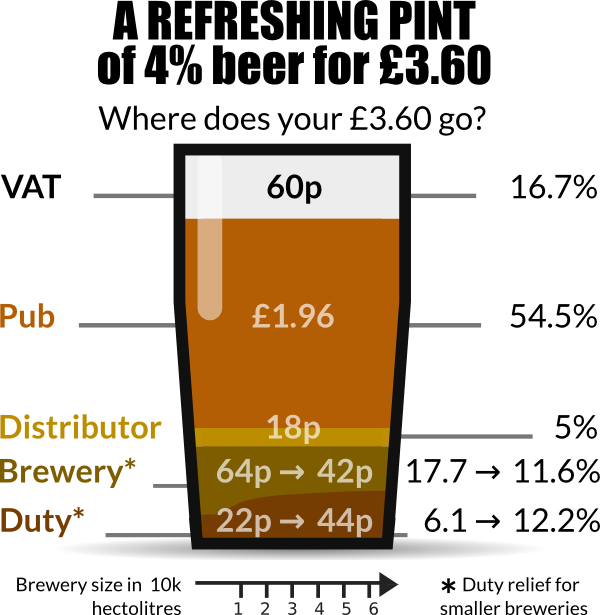
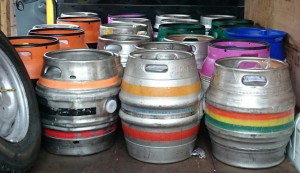
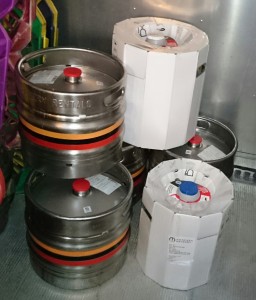

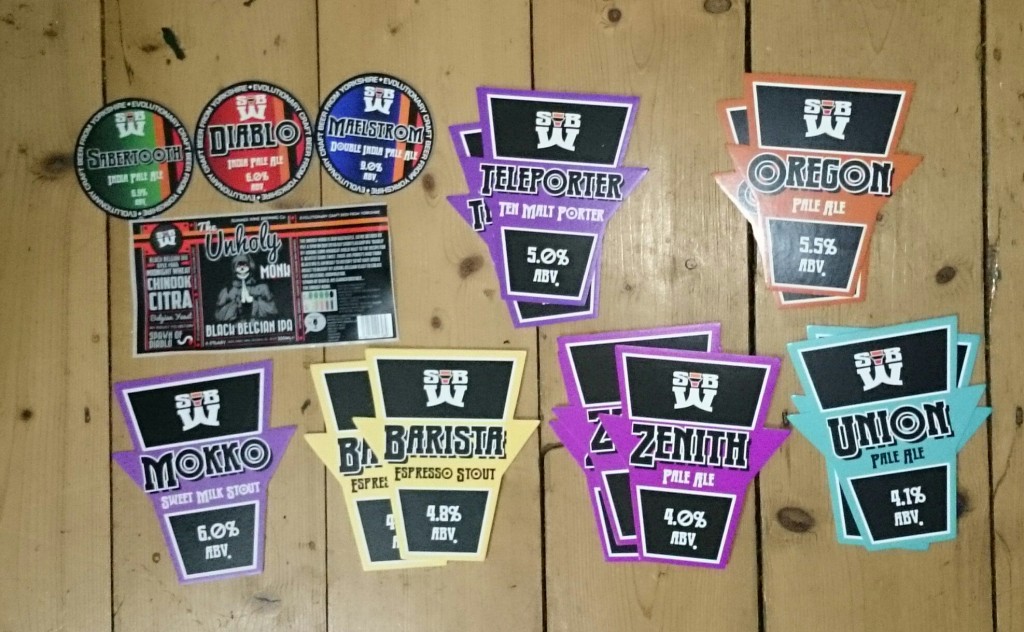
 I’ve refrained from saying much about this in case I bailed and left the project stillborn. Albeit I’ve not been particularly hush-hush… Anyway… I have beer in a cold-store now, and more beer on the way, quite a bit of beer all up… so this is most certainly going ahead.
I’ve refrained from saying much about this in case I bailed and left the project stillborn. Albeit I’ve not been particularly hush-hush… Anyway… I have beer in a cold-store now, and more beer on the way, quite a bit of beer all up… so this is most certainly going ahead.
